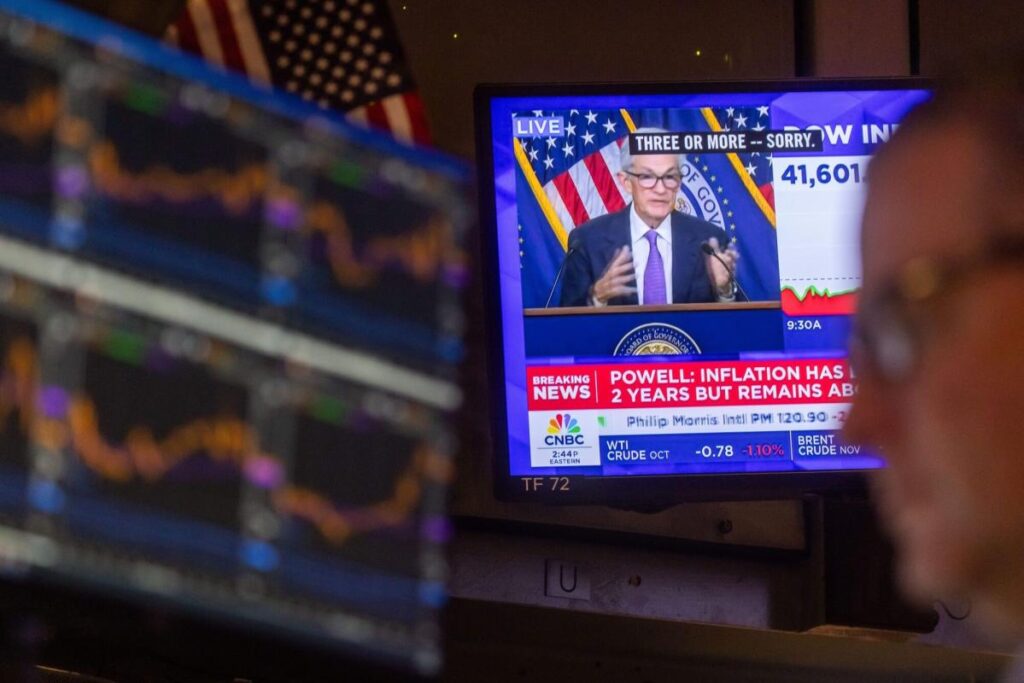U.S. Treasury yields have climbed back to the 4% mark for the first time since August, as a robust jobs report necessitated a reassessment of monetary policy expectations. On Monday, bond prices fell sharply, reflecting an extension of the selloff triggered by strong September payroll data that dampened speculation regarding significant further reductions in interest rates by the Federal Reserve. The yield on the 10-year Treasury rose four basis points to reach 4.01%, while the two-year yield increased by eight basis points, also hitting 4%. This sudden rise in yields indicates that traders are grappling with renewed uncertainty surrounding future Fed interest rate decisions.
The recent fluctuation in U.S. Treasury yields follows several developments affecting perceptions of the economy and monetary policy. Financial derivatives have begun to imply that a 25-basis-point rate cut from the Fed’s anticipated November meeting is now less certain. For the first time since early August, the markets reflect fewer than 50 basis points of rate reductions anticipated through the end of the year. Analysts at Goldman Sachs acknowledged that while higher yields were expected, the degree of strength revealed in the September jobs report may have expedited the market’s reassessment regarding the depth of potential Fed cuts.
Across the Atlantic, European bond markets mirrored the trend seen in U.S. Treasuries, as yields also rose. The German 10-year yields reached 2.25%, marking the highest level in over a month, while UK counterparts saw a six-basis-point increase to 4.19%. This selloff further emphasizes a year of volatility where investors have continually adjusted their predictions about economic health and central bank policies. The unexpected strength in the U.S. services sector added to concerns that the economy might not be deteriorating as rapidly as many believed, leaving traders to rethink their prior assumptions.
Another point of concern is the performance of shorter-dated U.S. Treasuries, which typically exhibit heightened sensitivity to monetary policy changes. This segment of the yield curve is on the brink of inversion again—an unusual condition that has not gone unnoticed. In a typical yield curve, longer-dated instruments yield more than shorter-dated ones. However, the aggressive rate hikes executed by the Fed had inverted these norms for nearly two years, leading to a temporary correction last month when shorter two-year yields dipped below the ten-year yields.
Moving forward, traders are looking to upcoming speeches from multiple Fed officials for further insights into rate trajectories. Minneapolis Fed President Neel Kashkari, along with other influential figures, are scheduled to address various events. Concurrently, market participants are also awaiting key inflation data—a consumer price index expected to show only a 0.1% increase in September, indicating a potential easement in price pressures. Fed Chair Jerome Powell has hinted that previously issued projections reflect an inclination towards quarter-point rate cuts as the final meetings of the year approach.
Ultimately, analysts suggest that the Fed may not necessarily wait for clear economic weakness to amend its policy stance. Dario Perkins from TS Lombard noted that the central bank could achieve more tolerable inflation levels without the need for a formal recession. This underscores a prevailing belief that the Fed is adopting a preemptive approach to cutting rates, reacting to perceived economic conditions in a proactive manner rather than waiting for anomalies to necessitate action. The blending of stronger labor data and evolving narrative surrounding inflation creates a complex landscape for investors and central bank policymakers alike.

